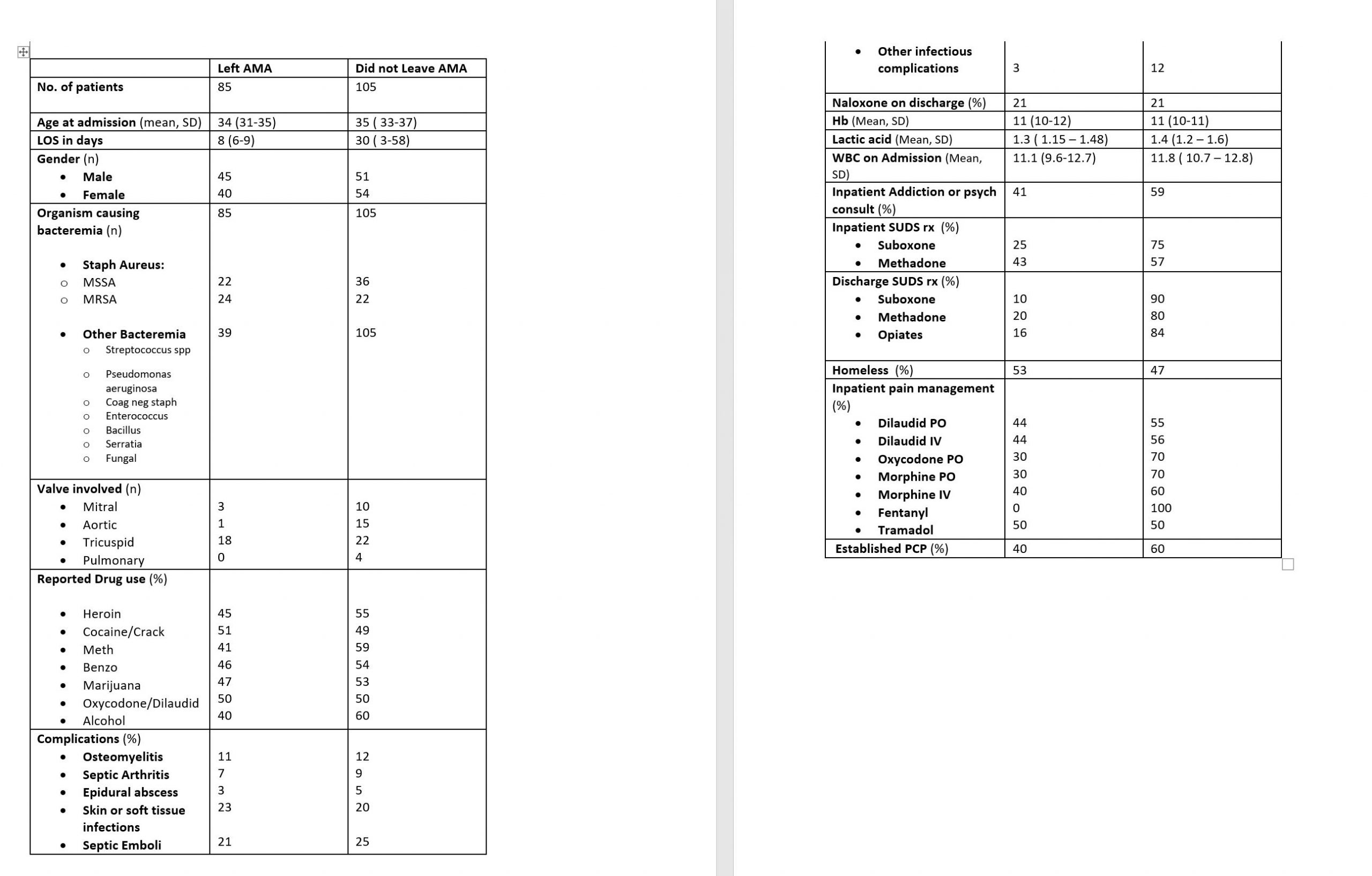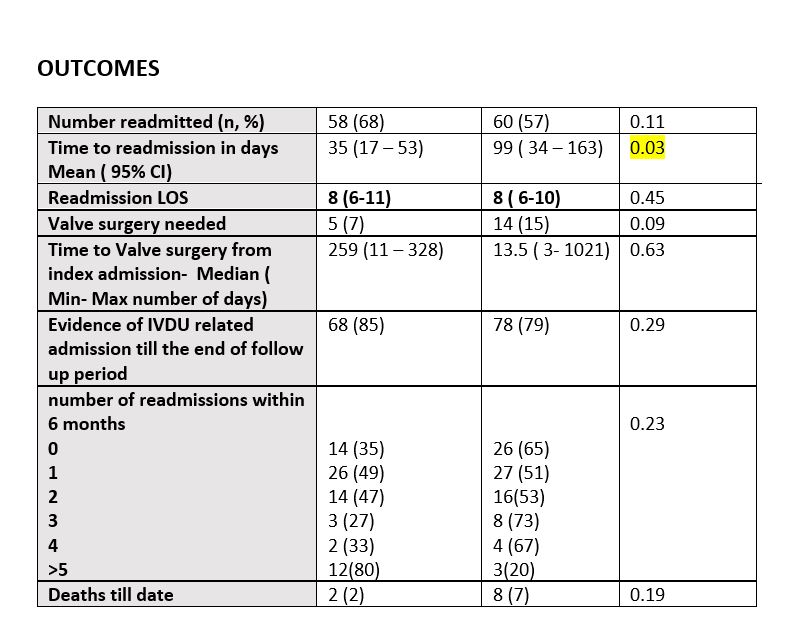Background: With the rising prevalence of persons who inject drugs, we are increasingly confronted with the challenge of managing them in the hospital setting as they are at an increased risk of leaving the hospital prematurely. There is limited data on the factors associated with leaving against medical advice (AMA) in persons who inject drugs (PWID) especially after a serious infection like bacteremia which is often associated with high mortality and morbidity. Furthermore, leaving AMA is associated with an increase in financial burden on the health care system as these individuals fail to make a full recovery the first time they are treated, which necessitates readmission to a hospital.
Methods: This was a retrospective study of patients who inject drugs with first episode of bacteremia seeking care with the Partner’s Healthcare system in the Greater Boston Metropolitan area. We identified eligible patients who use injection drugs, were hospitalized for first episode of bacteremia and left the hospital AMA. For comparison, each case was matched to a control who had similar presentation for injection drug use related bacteremia but did not leave AMA. Data was collected on the demographics, organisms involved in causing bacteremia, reason for leaving AMA. The occurrence of valve replacement or death was ascertained on follow up. Multivariable model adjusting for age, gender, Staph Aureus as a causative organism for likelihood of valve replacement surgery or death to determine the independent effect of leaving against medical advice after the first episode of bacteremia.
Results: The study included a total of 85 patients who inject drugs hospitalized with first episode of bacteremia and left AMA compared to 105 patients who did not leave AMA. The most common reason for leaving AMA is for personal reasons (36%) and fewer than 10% left for not having their addiction treated adequately. Over a median of 135 person-days of follow-up, 7 patients who left AMA required valve surgery (5) or died (2) corresponding to a rate of 2/10000 person-years after leaving AMA after first episode of bacteremia. The median interval between first episode of bacteremia and valve surgery was 259 days in the AMA group which was greater than 14 days in the non – AMA group. 58 (68%) of patients in the AMA group were readmitted in a month ( time to readmission – 35 days, 95% CI 17 – 53). After adjusting for age, gender, type of bacteremia ( Staph aureus vs others), there was no increase in risk of valve surgery or deaths among AMA- group compared to non – AMA group (HR 0.51, 95% CI 0.20 – 1.32). Similar results were seen when the analysis was restricted to patients with Staph Aureus bacteremia alone ( HR 0.49, 95% CI 0.19 -1.27).
Conclusions: This study presents the demographic characteristics and outcomes of first episode of bacteremia in persons who inject drug use requiring hospitalization and leave AMA. Further study to prevent patients from leaving AMA is warranted as it places a huge financial burden on the health care system and to provide timely care to prevent complications.


